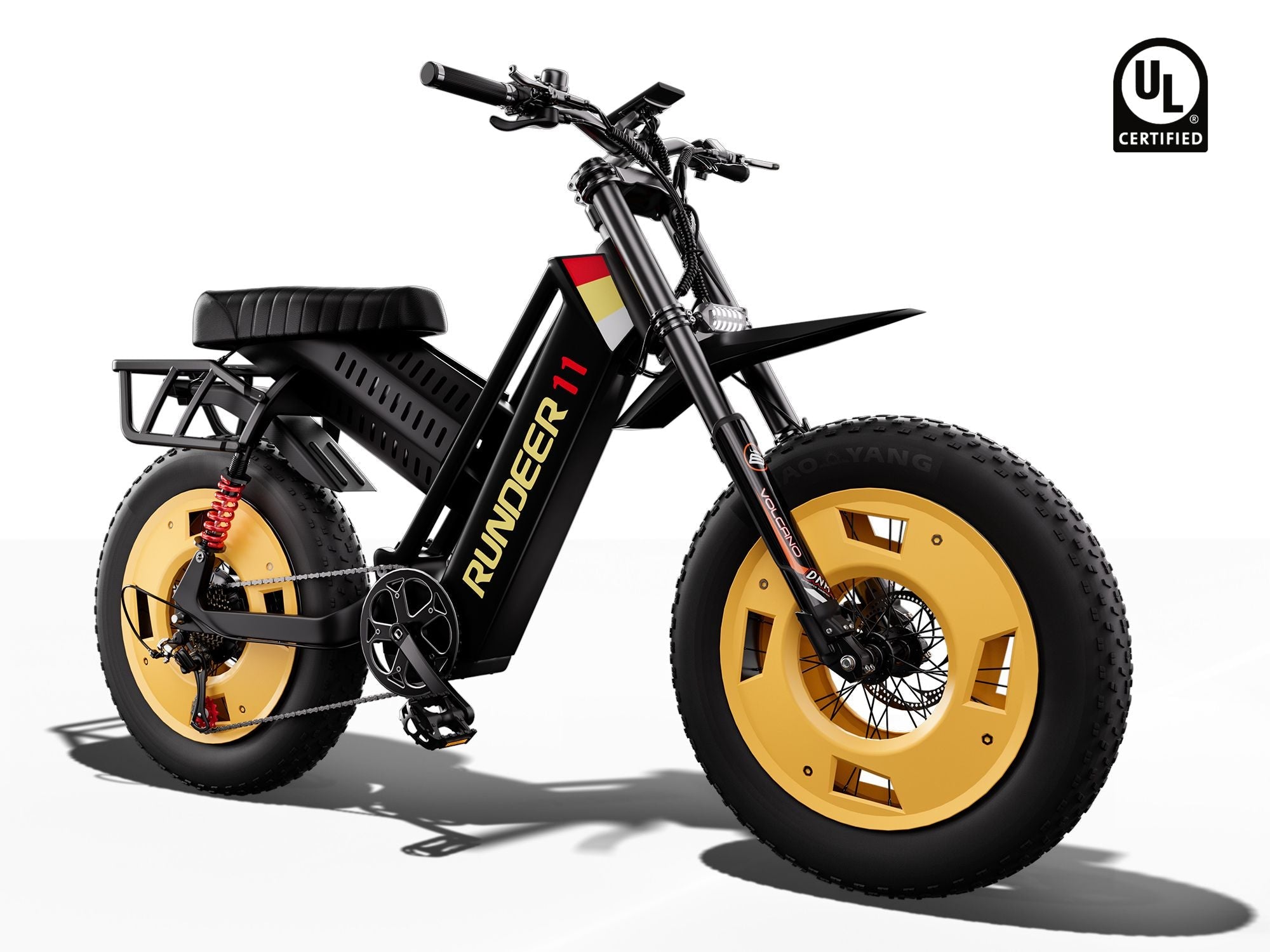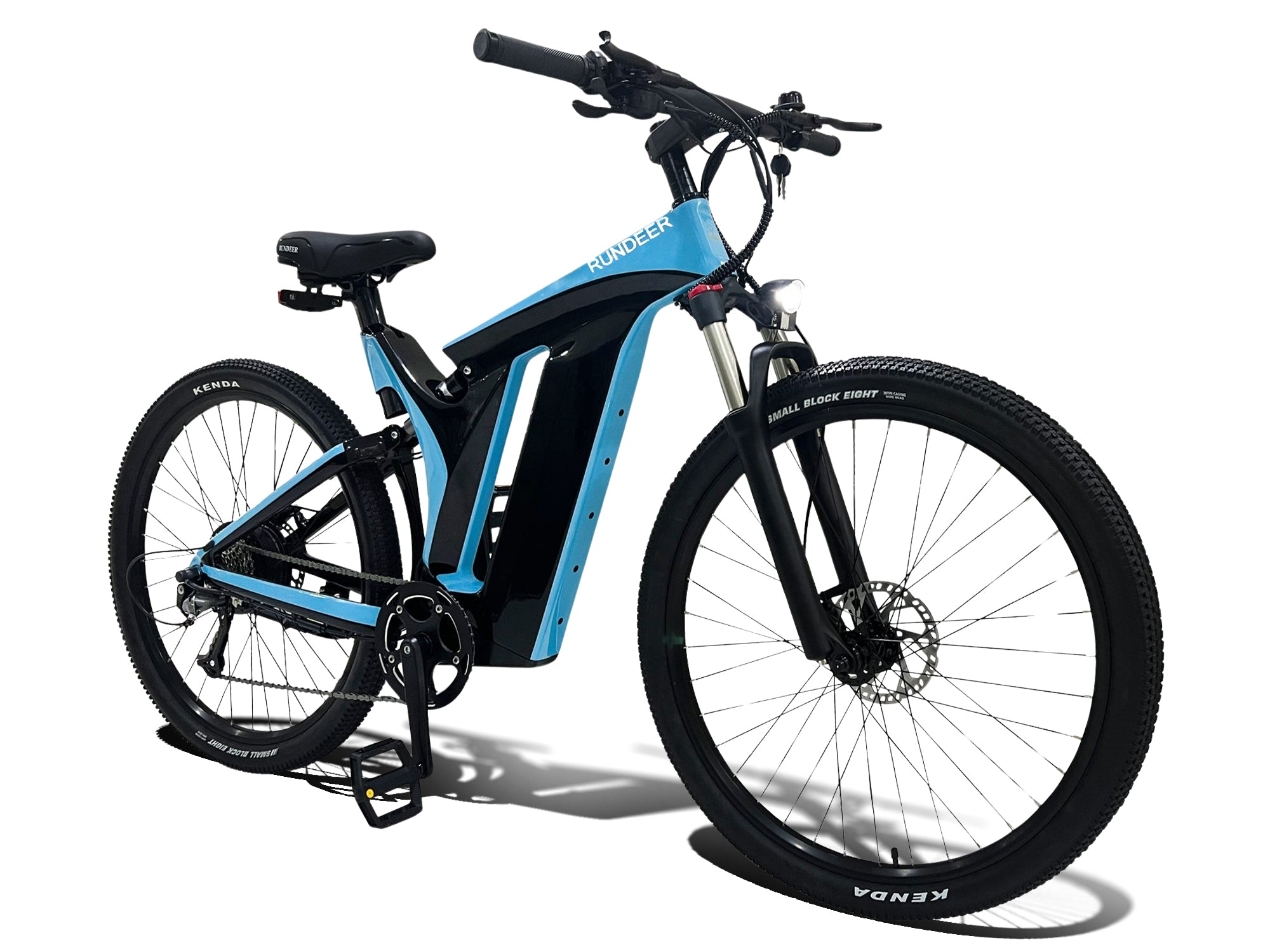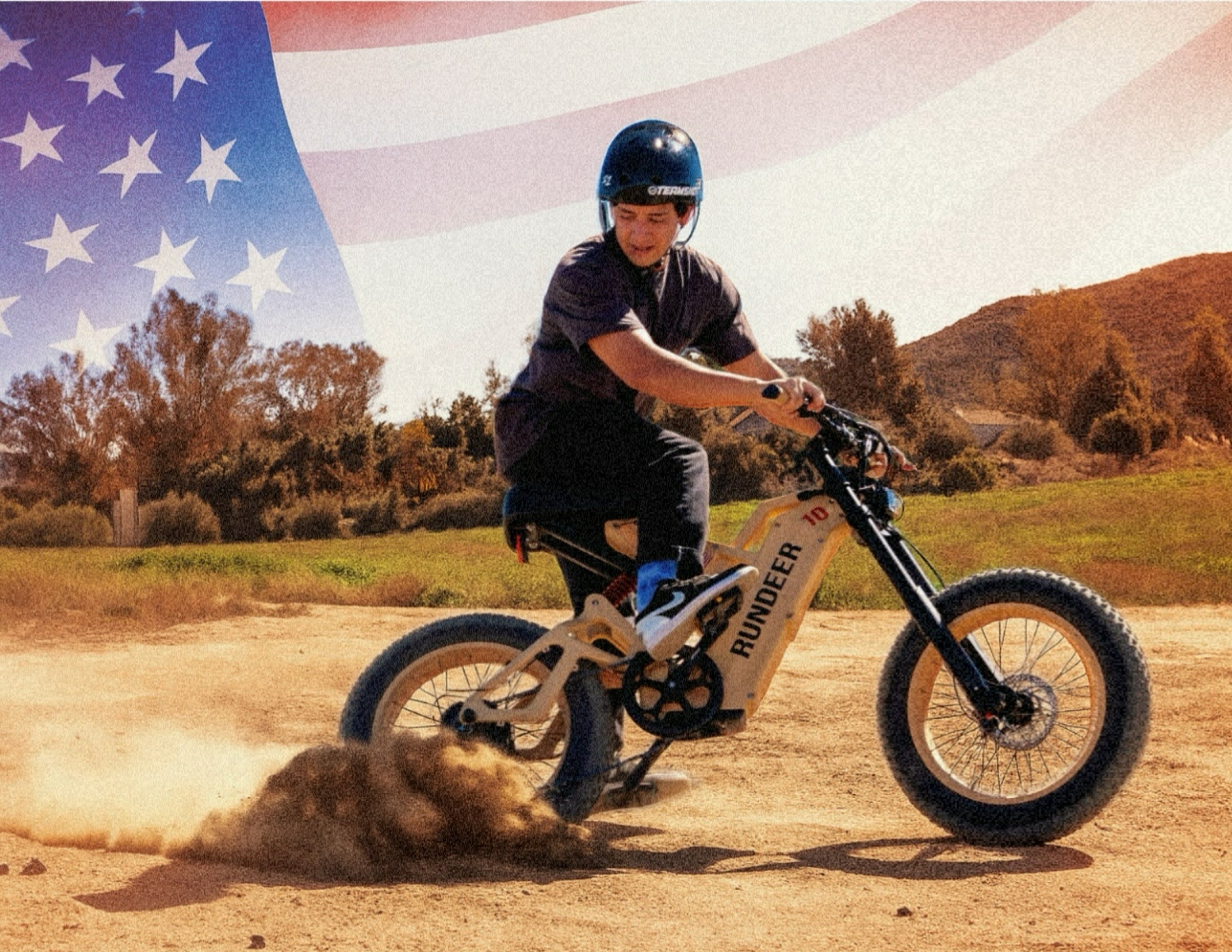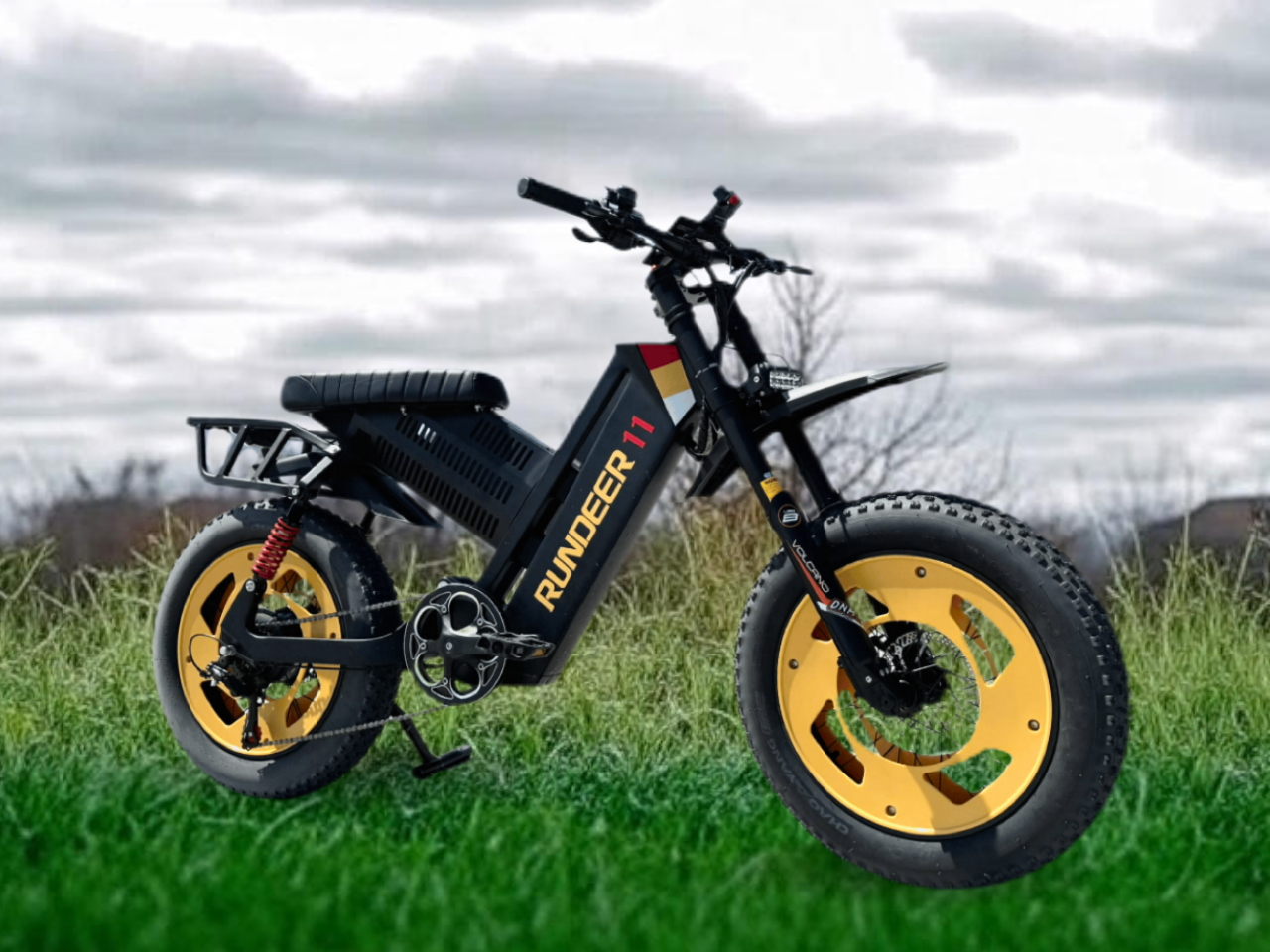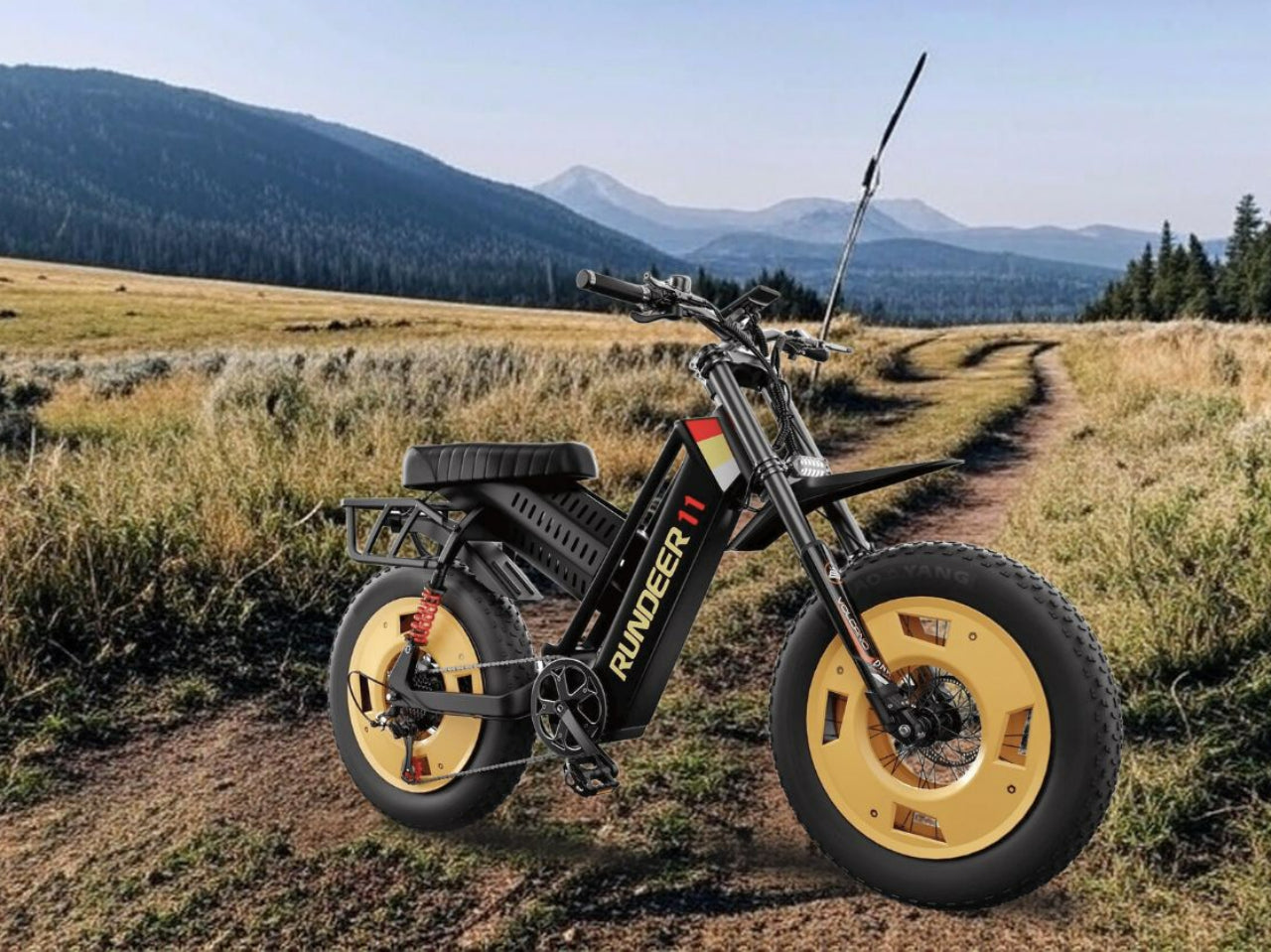If you weigh over 250 lbs and are shopping for an electric bike, you're probably asking: Will this thing hold me? Will it climb hills? Is it even safe? Great questions—and you're not alone.
Most standard e-bikes are built for riders under 250 lbs. That doesn’t mean they’ll break immediately—but under higher loads, frames can flex, motors overheat, and brakes may not stop you as fast as they should.
Fortunately, the market now offers solid electric bikes for heavy riders, rated up to 400 lbs. This guide breaks down what really matters—so you can ride with confidence, not crossed fingers.

Key Features to Look For in a Heavy-Duty E-Bike
1. True Weight Capacity
Look beyond vague marketing claims. Check for a manufacturer-rated max load, not just “recommended weight.”
-
Many commuter e-bikes: max 250–275 lbs
-
Higher-capacity options: 350–400 lbs (e.g. RUNDEER Attack 10: 350 lbs, Attack 11: 400 lbs)
Why it matters: Under-rated frames or wheels may fail under stress. Real-rated bikes use reinforced frames, stronger welds, and tougher wheels.
2. Motor Power & Torque (Especially for Hills)
Heavier riders need more help getting up to speed and climbing hills.
-
Look for 750W+ motors
-
Torque ≥ 80Nm for better hill performance
-
Hub motors are fine, but mid-drive motors offer better balance and climbing ability
Some all-wheel-drive models (like the RUNDEER Attack 11) offer dual 750W motors, giving great traction and power even in snow or sand.
3. Battery Life Under Load
Expect real-world range to drop by 25–40% if you’re over 250 lbs.
To avoid running out of juice halfway home:
-
Choose batteries 720Wh or larger
-
Prefer 48V systems over 36V for more efficient power
-
Avoid generic batteries—look for UL-certified packs (e.g., Samsung, LG cells)
4. Braking: Don't Compromise
Stopping 300+ lbs at 20+ mph takes serious braking power.
-
Always go with hydraulic disc brakes, not mechanical
-
Dual-piston or 4-piston setups preferred
Hydraulic systems self-adjust and provide smoother, stronger braking—especially important on downhills or in rain.
5. Fat Tires = More Comfort + Stability
Fat tire e-bikes for heavy riders offer better control and shock absorption, especially at lower speeds or off-road.
-
Go for 4-inch tires
-
Pressure range: 15–25 PSI (heavier riders = higher PSI)
-
Fat tires also help prevent pinch flats
Pair with a front suspension fork and a suspension seatpost if possible—your back will thank you.

Other Smart Considerations
➤ Pedals & Cranks
Cheap plastic pedals may snap under pressure. Opt for wide metal platforms with steel spindles.
➤ Wheels & Spokes
Look for double-walled rims, 36 spokes, and thru-axles if available. Avoid 28-spoke setups or single-wall rims.
➤ Seat & Post
A wide, ergonomic saddle (gel or memory foam) is essential. Bonus points if you can add a suspension seatpost to soak up road vibration.
Spotlight: RUNDEER Attack 10 & Attack 11
Fat Tire Moped-Style E-Bikes for Off-Road Riders
Both the Attack 10 and Attack 11 are purpose-built fat tire e-bikes designed for real-world power, stability, and rugged terrain. Whether you're tackling trails, cruising city streets, or heading into the wild, they’re ready to ride—especially for bigger or gear-loaded riders.
Attack 10 Overview
-
Max Load: 350 lbs
-
Motor: Rear hub 750W (peak 1200W)
-
Battery: 960Wh Samsung, UL certified
-
Brakes: Dual-piston hydraulic disc brakes
-
Frame: Premium magnesium alloy, one-piece cast for strength and reduced weight
-
Tires: 20x4.0” fat tires
-
Style: Moped-inspired geometry with a relaxed upright posture
Attack 11 Overview
-
Max Load: 400 lbs
-
Dual Motors: Front + rear 500W (combined peak 1500W), all-wheel drive
-
Torque: Up to 130 Nm combined for excellent climbing power
-
Battery: 960Wh UL-listed Samsung cells
-
Brakes: Four-piston hydraulic disc brakes for serious stopping power
-
Frame: Reinforced aluminum alloy, built tough for heavy riders and cargo
-
Fork: DNM Inverted Air Fork
-
Features: Rear cargo rack, 20x4” tires, durable saddle

Tips for Bigger Riders: Ride Safe, Ride Smart
-
Test Ride if Possible: Comfort and frame feel are crucial.
-
Use a Torque Wrench: Higher loads mean bolts loosen faster.
-
Check Tire Pressure Often: Underinflated fat tires = sluggish rides and higher risk of flats.
-
Wear a Helmet—Always: At higher speeds and weights, crashes get serious fast.
Final Thoughts: Ride Big, Ride Smart
At the end of the day, the best electric bike for a heavy rider isn’t just about wattage or wheel size—it’s about finding a ride that feels strong, stable, and built for you. Whether you're chasing trails, commuting to work, or exploring backroads on the weekend, there are now e-bikes that support your weight without compromise.

